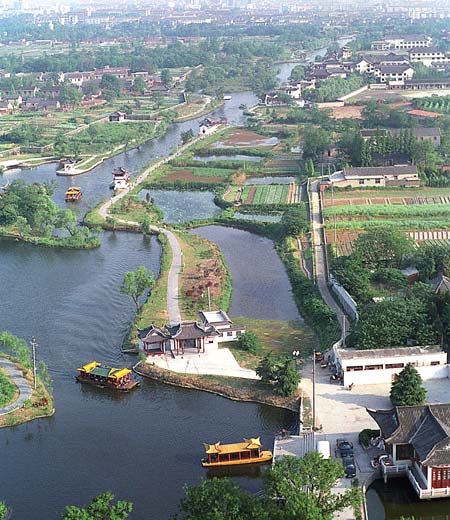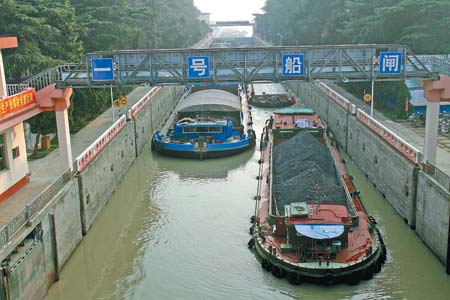Flow of history
Updated: 2012-04-04 07:50
By Chitralekha Basu and Song Wenwei (China Daily)
|
|||||||||||
|
|
Yangzhou was where the journey of China's Grand Canal began, if you went by the book.
Construction on the world's longest manmade watercourse - and also one of its earliest, as records show the canal has existed since at least the 5th century BC - started right here.
"Yangzhou is associated with the earliest recorded instance of digging for the canal," says Gu Feng, a spokesperson of the information office of Yangzhou municipal government.
|
|
"That was in 486 BC. About 2,000 years ago, the canal was the only mode of transport around these parts."
|
||||
Shaobo is the viewing point nearest to Yangzhou where one might connect with the history of a waterway that has served as a vital link between China's north and south - from Beijing to Hangzhou - for more than 2,500 years.
The canal was conceived as a strategic conduit by Fuchai - the King of the State of Wu, who ordered its construction in the late Spring and Autumn Period (770-476 BC).
It was primarily intended to carry supplies to feed his army as he had ambitions of invading the northern states.
Later, the Grand Canal evolved into a principal trade route.
During the Tang (AD 618-907) and Song (960-1279) dynasties, the canal - by then a well-entrenched network of waterways, connecting the major towns and marketing hubs in the provinces of Zhejiang, Jiangsu, Shandong and Hebei - reached its peak. It transported merchandise from the South to the emperor in Beijing.
My research showed Shaobo still had traces of Song Dynasty architecture.
Shaobo sounded like a place that had taken on the imprints of the significant milestones in the canal's life and preserved these in an album - and that, too, as we later found out, all within a 1-km radius.
But first stop, Yangzhou.
Here's where we meet Gu - a repository of information and anecdotes about Yangzhou, with whose history the canal is indelibly linked (see sidebar).
By AD 600, the waterway linking Beijing to Hangzhou and subsidiary streams feeding the main channels were all connected, Gu says.
Today's Top News
President Xi confident in recovery from quake
H7N9 update: 104 cases, 21 deaths
Telecom workers restore links
Coal mine blast kills 18 in Jilin
Intl scholarship puts China on the map
More bird flu patients discharged
Gold loses sheen, but still a safe bet
US 'turns blind eye to human rights'
Hot Topics
Lunar probe , China growth forecasts, Emission rules get tougher, China seen through 'colored lens', International board,
Editor's Picks

|

|

|

|

|

|







